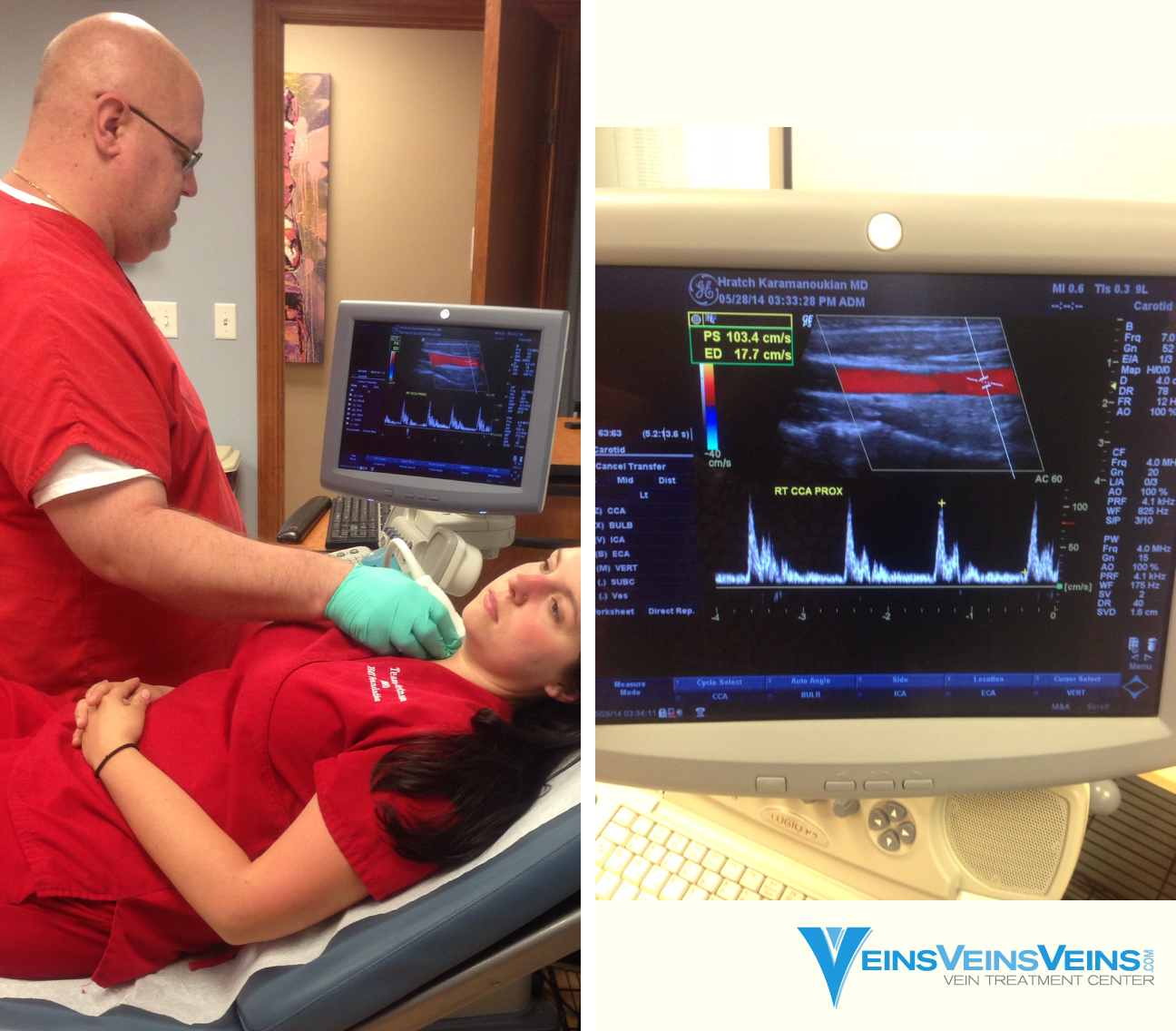What is Carotid Artery Stenosis?
Carotid stenosis is a narrowing of major arterial vessels in the neck that supply blood and oxygen to the cerebral tissues, caused by atherosclerotic plaques and hypertension. It is also an important cause of transient ischemic attacks and stroke. In fact, carotid atherosclerosis may be responsible for 10 to 20 percent of brain infarctions. Thousands of transient ischemic attacks (TIA) occur annually due to narrowing of the carotid arteries. Stroke, in turn, is the second leading cause of death worldwide. It is of obvious importance, therefore, to be able to diagnose and treat carotid artery stenosis, which in many patients may be asymptomatic.
What are the mechanisms of stroke due to carotid artery stenosis?
There are two main mechanisms thought to be responsible for incidence of stroke in patients with carotid artery stenosis. One is believed to be ischemia. Lack of blood flow or hypoperfusion of cerebral tissue results from gradual occlusion of the arterial lumens. This process may be dradual or acute as a result of plaque rupture and total arterial occlusion. Thrombosis after plaque rupture is another cause of hypoperfusion and cerebral ischemia. This is more likely to occur in symptomatic patients. Sudden increases in blood pressure and heart rate (such as occur during exercise or periods of stress) may trigger rupture of the plaque or hemorrhage into the plaque.
Embolization in another mechanism thought to be a more common cause of stroke. Small pieces of the atherosclerotic plaque and small blood clots are carried in the bloodstream where they lodge in the lumens of smaller arteries and cause occlusion of these vessels, with the resulting ischemia and infarction of the areas supplied by those vessels.
What are the risk factors for developing carotid stenosis?
Hypertension, diabetes, smoking, obesity, and high cholsterol levels are closely associated with carotid stenosis and stroke; control of these factors may decrease the risk of plaque formation and progression. Small studies have shown that gradual weight loss and control of hypertension may be effective in slowing down the development and progression of carotid artery stenosis.
How is carotid artery stenosis diagnosed?
Many patients with carotid artery stenosis are asymptomatic and often are not diagnosed until after they have expirenced a transient ischemic attack or when the narrowing is found incidentally. However, symptomatic patients are often diagnosed using flow and celocity in the arterial vasculature. Other modalities used are magnetic resonance angiograpy (MRA) and sprial computed tomography (CT scanning). All of these are sensitive to and specific for diagnosis of this disease. It is possible to determine the location as well as the extent of the narrowing. All of the proedures mentioned are non-invasive and reduce the need for conventional cerebral angiography.

How often do I need to be scanned for carotid artery stenosis?
After the initial diagnosis is made, it depends on the extent of disease, the symptoms, and treatment plans. Some patients will have stenoses severe enough to dictate immediate treatments. If the stenoses are relatively small (less than 40 to 50 percent), medical treatment along with yearly or biannual imaging may be reasonable. If symptoms progress or persist, evaluation of the stenosis may need to be done more often with the goal of surgical treatment in mind.
What is the treatment of carotid artery stenosis?
There are several ways to manage carotid artery stenosis. Once again, the management will depend on the extent of stenosis and the development of symptoms or lack thereof.
This information is from Dr. Karamanoukian's book called 'Doctor, How Do I Live the Heart Healthy Way ?' - you can get a free copy of this book when you come in for your carotid Doppler study.
To schedule a carotid Doppler ultrasound study (which is covered by most insurances), contact our ACR Accredited Vascular Lab at 716-839-3638. Dr. Karamanoukian will give you the results personally (upon request) and he will send a copy of the report by fax, EMR or mail to your primary care physician.